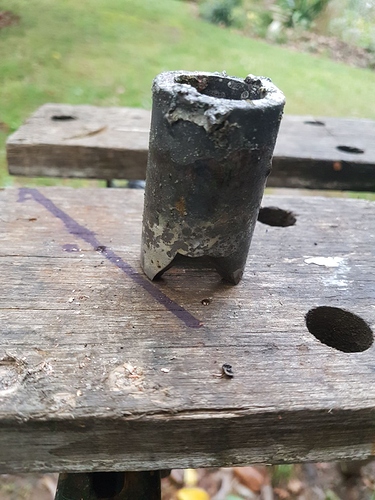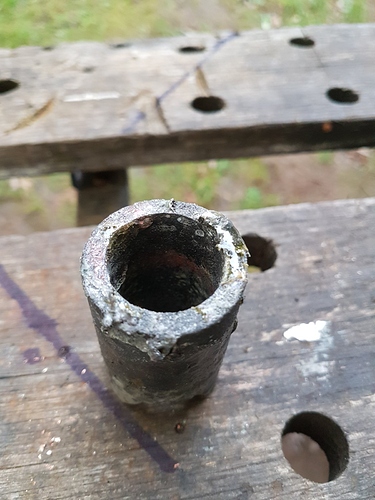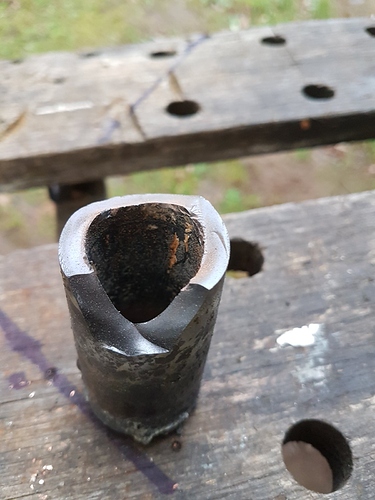I like the idea. It could get a little difficult to regulate as temperature and pressure vary, and there’s a temperature lag with varying demand. If some kind of peristaltic pump could regulate the introduction of water in relation to demand it should work fairly well. Otherwise, a carburetor has been suggested to regulate water.
Why not try hooking up a nebulizer to deliver the water vapor? I find the drip to work very well as the liquid water turns to steam as it travels down the nozzle and is totally vaporized by the time it gets to the glowing charcoal. I have also found the amount of water you can add is affected by temperature and relative humidity. I remember well the day when it was just above freezing with lots of fog and a lot of water condensed out in the filter. This was with out a drip which showed me that there was more water in the air than the charcoal could split.
Gary in PA
Thanks Gary, here in the wet Seattle area I have had that issue.
My charcoal powered lawn mower has ran poorly and then I found 1/4 cup of water in the cyclone.
Last summer I never had that problem
THANKS Gary
I ignored the alternative of using a nebulizer to get water into a generator. Can we dose the fog flow of a nebulizer?
the main objective of injecting steam instead of water comes from the fact:
1: my nozzle is vertical and the water can therefore only rise there under the form of steam.
2: I did not find a way to build a precise and easily adjustable drip (how do you do it? )
Thierry
If you can get your hands on an Iv bag and tubing, that will get you a very precisely metered drip.
Had a slight accident while poking a bar up into the gasifier to clear some molten slag around the top of the nozzle , i must have bashed the bottom cool end of the nozzle and broke off a bit of it , i cleaned it all up and just replaced it back into the nozzle holder that luckily covers up the broken end . this nozzle is now 2 years old i think and is getting some heavy use again here during winter 3 or 4 hours run time at least 4 times a week .
This has certainly been the longest lasting nozzle of them all so far
I think i may have to buy a few more just in case i get heavy handed again .
Remind me, what material was this nozzle? And is it mounting in a cast refractory nozzle holder or something else? You certainly have gotten a lot of use out of your gasifier; it seems like a very robust design.
Dave, Did you ever get a chance to test the tungsten carbide sandblast nozzles? I can’t remember where we are with those. I have one in my ammo can gasifier that has not been fired up yet.
Dave & Brian,
That is the Thick Wall Hexoloy Silicon Carbide tube nozzle, isn’t it? I bought two of them after your earlier very positive durability report. I have mounted one of them but not used it yet. Glad to see it continues to hold up well–just have to be careful about banging against it.
Anyone try using ceramic clay? I just so happen to have a big block of white ceramic clay. Its for the battery tech Im playing with but plenty there for making nozzles. I would think the gasser would make a great kiln to cure it.
I think somebody tried a purchased ceramic nozzle. Seems like it broke from the thermal expansion. Now making a thick one out of ceramic might actually work. I would be inclined to add some kind of fiber reinforcing to the mix.
Thats my thoughts, make it thick like you guys are doing here.
The only real difficulty is the curing in oven before you can use it as nozzle…
If not proper taken care of, then it becomes brittle or cracks easy , thermal shock sensitive.
However, its fun to think of and test it for…
Some info on fine ceramics:
Yes this is still that very same thick walled Hexoloy carbide tube i bought on ebay , i had a 1 inch galv reducer down to 3/4 i turned the thread out of the 1 inch side so it was a plug fit into the nozzel and then just pushed it in firmly .
Bruce if you remember i did say i would try those sand blast nozzles as soon as i take the old one out , but the way this nozzle is holding out i may have to wait a while longer still , still not got round to building a down draft gasifier yet and was going to use those 3 nozzles on that one .
I had tried many types of materials on my nozzles over the past years and the refractory cement i cast around a tig nozzel worked the best, a working life of around 100 /200 hours , it was a large heavy lump and in the end would always turn to molten glass or crack and break apart ,
Matt i was going to ask what you have used for a nozzle on your latest cool charcoal build ,but if you want reliability for cheap then you be hard pressed to find something as long lasting as these tubes .
https://www.ebay.com/c/1832907530
Dave
You need a soft-metal or wood- end poker!! Thanks for the nozzle update, looks like “A Winner”. 
I think it would handle the temperature. But alumina, aka porcelain, aka aluminum oxide is brittle, and very sensitive to thermal shock, as Koen says. In foundry It is used for assay crucibles, because it does not contaminate the molten metal.
Clay-Graphite crucibles are most often used for steel and ferrous alloys. They are brittle and subject to thermal shock, but they do not react with molten iron.
For every day melt and pour foundry work involving nonferrous metals silicone carbide crucibles are most often used. The material is also sometimes called Starrbide, or carborundum. Many grinding wheels are also made of it.
Rindert
I tried a lot of ceramic nozzles. They always broke from thermal expansion. I like stainless steel.
For me its mass and heat disipation, but never heat waste! Sounds familiar? (WK)
Yeah so far I have not had any degradation of the SS Nozzle Im using. However, Im in Michigan and we grow gills in order for us to breath in the humid air. So it maybe why I dont know.
I just ordered some to try. I really like my water cooled nozzle, but some applications cannot handle the water storage, such as my Gravely tractor. In that unit, I use exhaust gas to cool the SS nozzle but your ceramic ones should not need that. thanks for experimenting and sharing the results with us. Looks like this nozzle can really “take the heat”!
Gary in PA


